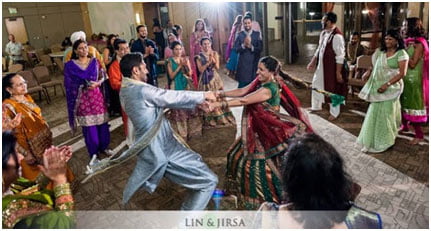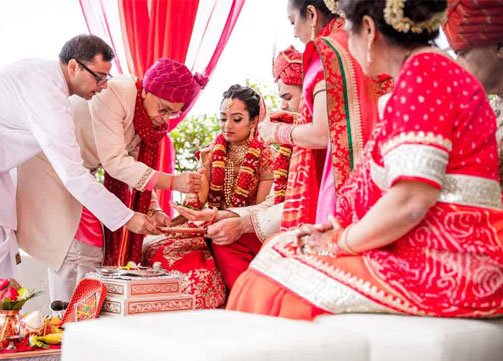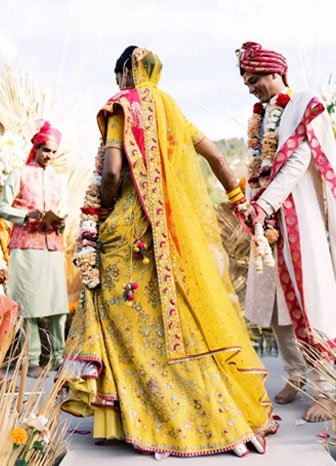THE HINDU WEDDING
When we talk about Weddings in India ,there are different types of Weddings according to the Religion, Region within Region community wise.
Here are the five ingredients quintessential to every Indian Wedding.
i) The Bride is the central attraction of any Wedding
ii) Food and more Food -an extravagant dinner or luncheon.
iii) Jewellery-Special Jewellery prepared for the Bride on the Wedding day.
iv) Relatives from every part of the country-The great Indian families come together at a Wedding.
v) Blessings-Elders giving their blessings to the young couple what make Indian Weddings so special.
As per Indian law if the following conditions are violated, become void marriages
i) Either party is underage the bridegroom is below 21years and the bride is below 18 years.
ii) Either party is already married . Polygamy and Polyandry are prohibited.
iii) The Parties are SapindasSapinda is a term used in context of cousin marriages in Hinduism or within the degree of prohibited relationship.
Let us brief about Hindu Wedding though with regional and community there are variations but the essential features are almost same. The events of a Hindu Wedding normally takes place over the span of three days with different events taking place each day.
Bigger than most Western Weddings average of 150 to 200. This number can lead into thousands. Traditionally there is no kiss at the end of a Hindu Wedding. It is important for attenders to know that there is no Alcohol served or brought to the Hindu Wedding ceremony.
Gifts are not usually brought to a ceremony though this can vary. The only exception is if you intend to present them with a monetary gift , which case this would be given in an envelope at the wedding reception.
Prior to actual Wedding there is a gathering called the Sangeet or Garba depending on the regional background where family comes together to sing, dance and reveal in the joy of upcoming union. Each side of the family sings a folk song to welcome the other family members.


The mehndi ceremony a big party traditionally only attended by the bride’s Close female family friends and family members
Henna paste is used to apply intricate designs of temporary decorative art to the bride’s hands and feet. It is also common to hide her Partner’s name within the art work.
Do not expect a Bride in White at a Hindu Wedding. South Asian Bride will wear seed saree or a modern lehengacholi
The arrival of the groom and his party to the ceremony Site called vara Yatra or baraat depending on the region is celebrated with great joy


In the Hindu tradition the father of Bride place his daughter’s Hands into her Spouse’s hands as a gesture of giving her away Known as the”Kanniyadaan” Here there is no contract but it is offer
In the centre of the Marriage Hall a fire iskindled. A Hindu Wedding is a sacrament, not a contract, Fire is kept as witness.
The “Hai Mala” is a garland comprised of strung flowers that is exchanged between the newly weds. It symbolises the Partners welcoming eac other into their families
“ Mangala Sutra “ or auspicious thread the Bride is dropped by her new Spouse. Regional variation may also include beds of Red,White or other Colours.
The”Saptapadi” Seven steps is an important ritual. The newly Weds have their garments tied together typically the bride’s veil and the groom’s sash. In south India they make seven steps,North India they make seven circles Around a ceremonial fire to signify their friendship
Though India was under Foreign Rulers for some centuries the traditions are preserved till date in weddings,temples, in festivals without impact of different invasions Dresses may have changed but heart is with traditions


Recent Comments